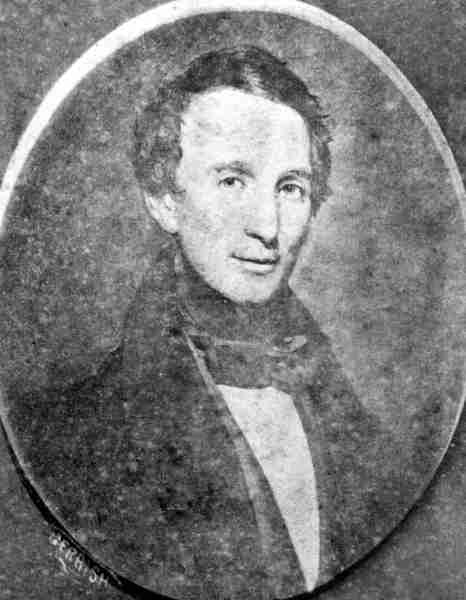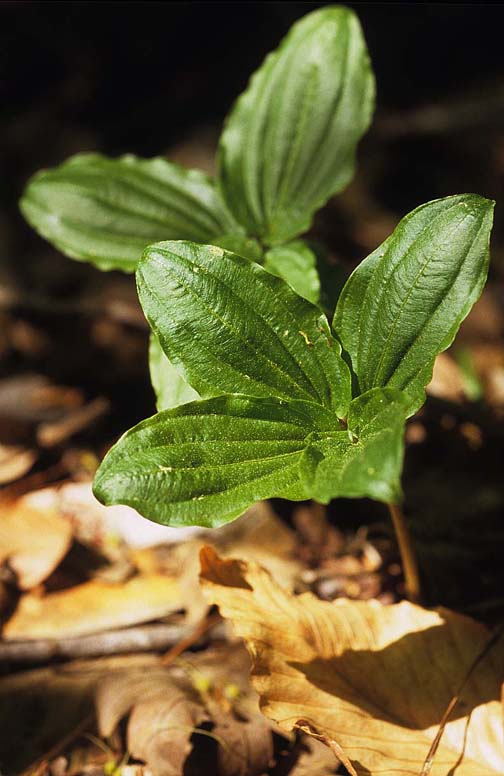Little-known
plant, misspelled monument tell
dramatic tale of tragedy 100 yards from dry land
dramatic tale of tragedy 100 yards from dry land
| Botanist Hardy Bryan Croom drowned
with wife, three children, leaving
relatives to contend for his rich plantation land, slaves in Tallahassee By Michael E. Abrams In our modern day and age, hurricanes are well-charted by satellite. Ships are warned and take action. But there was no way to predict deadly hurricanes 170 years ago. Such a storm struck a steamship and drowned most of its 120-130 passengers and crew off the coast of North Carolina in October 1837, only a hundred yards from shore. Therein lies the story. It is enshrined in Florida history. The tragic tale is also of a family split asunder in a bid to inherit rich plantation lands near Tallahassee. The tale reaches those today who are curious to learn about a little-known green plant that survives from ancient flora which once spread from the Orient across North America, or a large tree called the Torreya which has practically disappeared. A botanical gem, the bright-green plant, four-leaved and about the size of a saucer, is named for pioneer botanist and planter Hardy Bryan Croom. He was wealthy North Carolina slaveholder and prominent citizen of both North Carolina and Florida. A successful planter, he grew cotton, sugarcane, corn and rice on land had purchased land in Leon County -- once granted to the Frenchman Marquis de Lafayette for service to this country in the Revolutionary War.
He was a product of the Age of Enlightenment, where gentleman farmers, like Thomas Jefferson, were also botanists, geologists, architects, artists, inventors. It was an age of such amazing versatility. Modern education in the United States affords the opportunity, but our acquisitive culture and endless witless amusements, from television to hip hop to sports fanaticism, have mitigated against the full development of the intellect and created generations of "consumers." Croom discovered the Torreya tree, Torreya taxifolia, another rare species, and named it for for Dr. John Torrey, a collaborator and well-known botanist in New York. This large tree, once thriving along the river, has almost disappeared through what some say is a fungal blight. In return, Dr. Torrey dubbed Croom's herb "the croomia." It is known only in Gadsden and Liberty Counties in Florida, and further north in Georgia and Alabama. It is rare in those parts, too, found in niches that survived huge changes in climate over millions of years. Related plants are extinct except for pockets and scattered relics, writes Daniel Ward in Rare and Endangered Biota of Florida. Croomia pauciflora ('small flowers' in Latin) exists in only three species, two in southern Japan and one in the Southeastern U.S., he writes. Croom did not enjoy living in Florida's summer heat. He did, however, relish springtime where he could explore and botanize. He suffered from problems with his lungs, and sought to move his family from New Bern, N.C. to Charleston, S.C., and keep his Florida lands. Charleston also afforded an intellectual atmosphere equal to any city in the country, Croom wrote. The Croom family boarded the recently built steamboat "Home" in New York for Charleston. In that day, there was no way to predict where hurricanes might strike. This one, known as "Racer's Storm" had hit Yucatan and Texas and crossed over the southeastern United States, exiting in the Atlantic off the coast of North Carolina. Croom and his wife Frances and their three children perished when their ship went down in the hurricane off Cape Hatteras, N.C., in October, 1837. He was 40 years old. The family's death at sea resulted in a fierce 20-year legal battle by his remaining heirs, which eventually went to the Florida Supreme Court. The question of which family member died last in the swirling waters became a matter of speculation, debate and testimony. Florida and North Carolina laws clashed on inheritance rules. The outcome of the trial resulted in bad news for Croom's brother Bryan, who eventually had to sell the plantation Goodwood. The brother and wife moved to Montgomery, Alabama, leaving behind what has been called one of the classic ante-bellum homes remaining in the South. It is now a landmark and attracts many visitors in Tallahassee. It passed through many hands and has always been a social center for Tallahassee. Goodwood Museum and Gardens is now operated by a foundation and is the site of concerts, happy occasions and fund raising events. Croom, an intellectual who is said to have translated a work of the French philosopher Voltaire into English and presented the copy to the Marquis de Lafayette, is pictured here, courtesy of the State of Florida Collection. He is memorialized in North Florida with a marker at St. John's Episcopal Church in Tallahassee. The church was established in 1829, eight years before he died, and the current cornerstone was laid in 1838. In March, 1872, Dr. Torrey, 76, on a visit to Florida, came to Tallahassee for four days. It had been more than than 40 years after his good friend's death. The elderly man sat by the obelisk-like monument at the Episcopal church and copied the epitaph that visitors to the church may still read and marvel over. It is the epitaph of a person who bears emulation in our self-indulgent age with its slick promotion of false values and emphasis on cheap celebrity. Torrey, himself, died within the year. Like many educated men living in the South, Hardy Bryan Croom did not question the institution of slavery. It was accepted as part of life. His thoughts, whatever they were, probably stood in contrast to those of his friend Alvan Chapman (we have seen his first name spelled "Alvin" also), the surgeon and noted botanist from Massachusetts whose Yankee sympathies were well-known in his home in Apalachicola. It would be interesting to know if they had conversations about such things. They botanized together. |
Most families are quite upset when incorrect information is put into an obituary. This is why newspapers now rely on the mortician for the information, rather than friends or the police, for instance, and why, if the family wants to print a longer obituary, they have to submit it in their own words and pay for it by the inch. A misspelled grave marker is much worse. In the sadness, perhaps no one noticed. This misspelling may simply have been a result of the way his name was pronounced in the deep South. Such things, in abundance of kindness, may have been best overlooked. Too, it was probably expensive to order a change – perhaps a new monument. It is said that the marble was given by someone whose name remains a mystery. Was it possible the donor was not present during the dedication? Here are the words:
The croomia was growing in rich leaf litter in a mixed forest in Gadsden County, probably only a few miles from where Croom did his botanizing. It was found growing in a couple of small shaded plots on a slope. The plant is probably about 8 inches in width, and the flower is about the size of a button and dances in the breeze. Sources: Bulletin of the Torrey Botanical Club, April-June 1986; The Croom Family and Goodwood Plantation by William Warren Rogers and Erica R. Clark, University of Georgia Press, 1999; Florida State University Strozier Library Rare Manuscripts – Letters of Hardy Bryan Croom; thanks to Leigh Brooks for alerting us to the plants in Gadsden County. Photographs of plant and church, copyright M.E. Abrams. Readers may purchase books related to the Crooms and Florida history by clicking below. These are from Amazon.com and are priced very competitively. The Goodwood book may also be found in the rare book collection at Strozier Library at Florida State University. |




